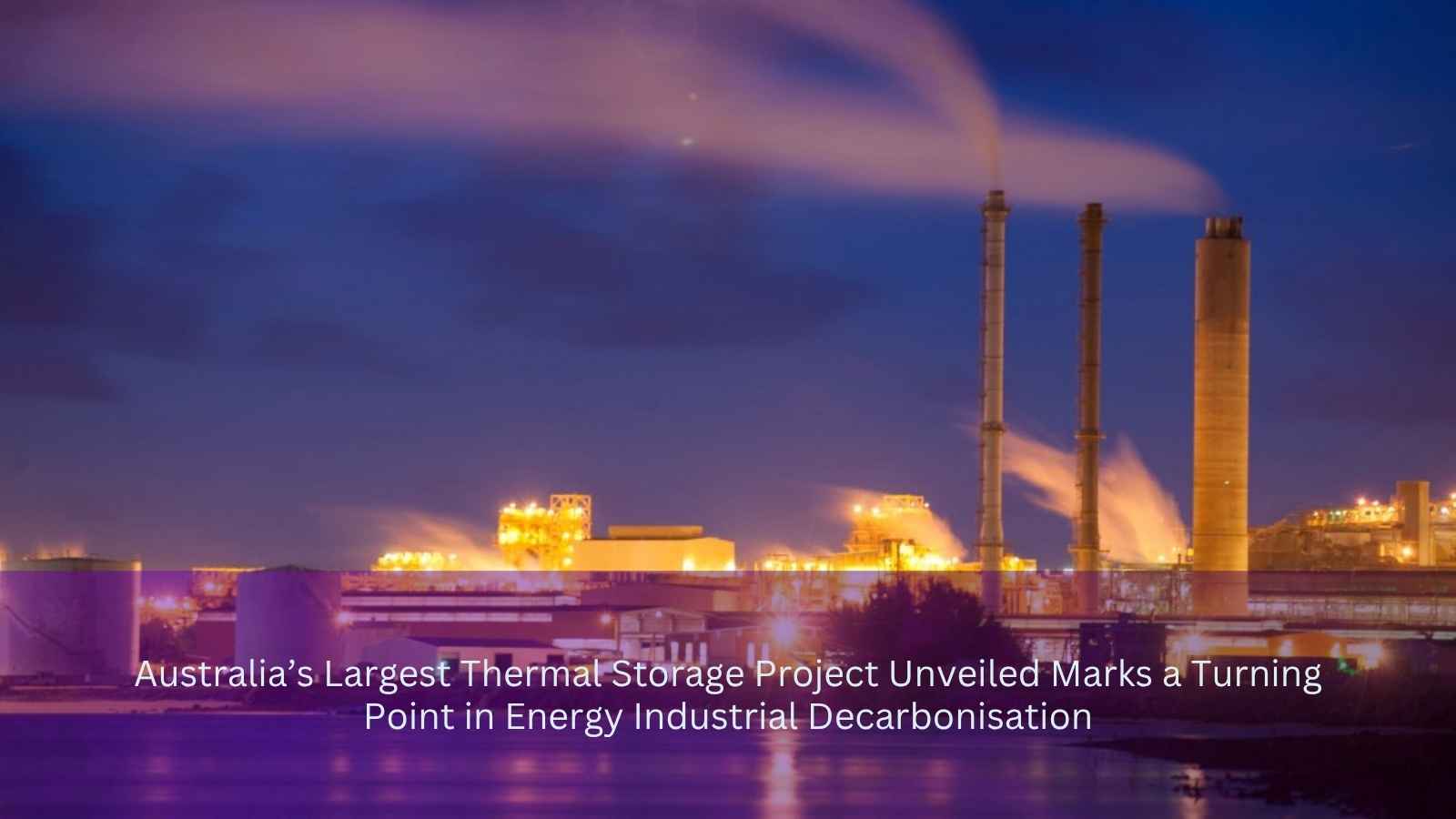Australia is making a significant leap in clean energy innovation with the advancement of its largest industrial-scale thermal energy storage project. Australia based company MGA Thermal in partnership with infrastructure firm Knode and industrial giant Tronox, take crucial step in decarbonising heavy industry. After a successfully completed pre-feasibility phase, the opportunity now progresses into Front-End Engineering Design. This Phase signifies a milestone not only technically but also at a higher level toward transforming thermal energy into an actual market and offsetting fossil fuels in manufacturing.
MGA Thermal first came on the scene internationally in the year 2025 when it revealed an industrial 5 MWh demonstrator in Tomago, New South Wales, Australia that was on the cutting edge of technology. To carry out the process of charging and discharging thermal energy, the system used around 3,700 single-type “MGA Blocks” which continuously run for 24 hours without any break, producing superheated steam. This world-first proof-of-concept validated their proprietary electro-thermal energy storage system, which not only can store renewable electricity as high-grade heat but also can dispatch it when needed. This demonstration success by the company has become the basis for the company’s further commercial expansion, and it is currently in the process of scaling up the solution for industrial applications in Australia.
The project in Western Australia that’s coming up will implement a 180 MWh TES plant which is able to provide around 20 tons of steam continuously per hour. This facility is created for inserting into the South West Interconnected System (SWIS) and the building work is planned to begin in 2027 with full commissioning by late 2028. This system will give local businesses the opportunity to get hot steam of high quality without relying on polluting sources of energy thus, enabling them to not only switch from gas-fired boilers to clean but also to dispatchable thermal energy. The project is a big step towards the decarbonisation of the region that is the most energy-intensive in Australia, and at the same time, it is opening up new avenues for long-duration energy storage.
Heat energy storing is key to a big job: making heat work like it used to but without harm. Industries such as mining, processing minerals, chemicals, and foods take up about 23% of all the energy used in Australia. A lot of this energy comes from steam made hot by gas. But TES systems, unlike normal batteries that push out short sparks, can keep a lot of energy for a long time and let it out as heat. This is great for places for industrial settings where they always need hot steam.
Plans to change how Australia uses energy, like the Renewable Energy Zones and the “Future Made in Australia” program, further help to grow storage technologies. These big plans at both the country and state level push for more green power and new storage methods all over the grid. For example, Victoria needs 65% green energy by 2030, and New South Wales aims for big, long-lasting storage methods to keep its energy steady. Heat storage fits well with these goals as it lets people use energy well, even when solar or wind power goes down.
MGA Thermal’s upcoming project aligns with this broader national effort. Not only does it offer a tracks to net-zero emissions in industrial settings, but it also mark economic and technical viability. The MGA’s thermal energy storage plant is competitive with fossil-fuel alternatives in both capital and operational expenditure. The technology gives a strong and easy steam flow that can meet changing work needs while cutting down on harmful gas release. Also, heat storage levels out the grid, letting extra sun or wind power be kept as warmth and used later when needed, making the grid more stable.
In Australia, more plans show how key hot energy is in making less waste in big work spots. At Mars Petcare in Wodonga, Victoria, they are setting up a mixed hot system. It uses focused solar heat (CST) and ETES to end the use of old gas for making heat by 2026. This will be the first place in the land to run fully on clean heat, giving a clear way for food and drink places all over to follow. At the same time, firms like Vast Solar push ahead with solar power plans in Port Augusta, South Australia. They add hot storage that might help make green hydrogen or methanol.
Australia is a great place to try these new ideas. The land has lots of solar resources, more need for industrial decarbonisation, and lots of key minerals. These things make a great set-up for making, growing, and sending out TES technology. Also, as world markets look for clean stuff, Australia could lead in sending out green making ways and hot storage know-how.
In conclusion, the development of Australia’s largest industrial-scale thermal storage project signals a broader shift toward sustainable, reliable, and economically viable clean energy solutions. By replacing fossil-fuel-driven process heat with renewable thermal energy, projects like MGA Thermal’s are not just solving a technical challenge they are transforming how Australia’s industries operate. As long-duration thermal storage becomes increasingly central to the nation’s decarbonisation strategy, Australia is positioning itself as a global leader in the clean energy transition, built not on fossil fuels, but on innovation, heat, and sustainability.











